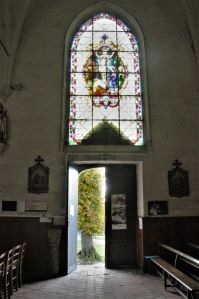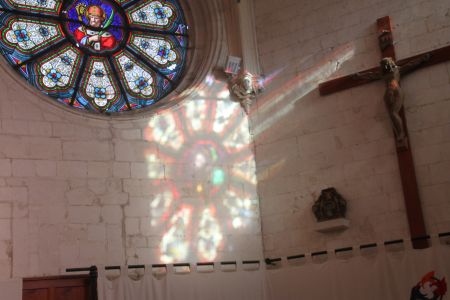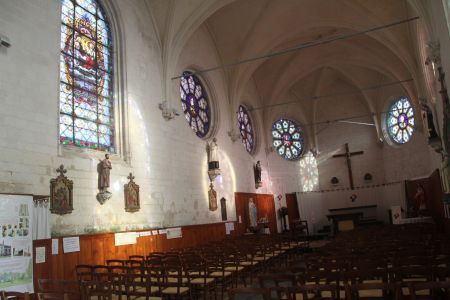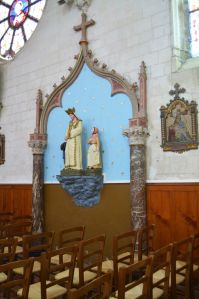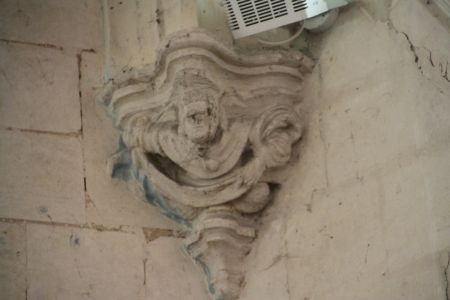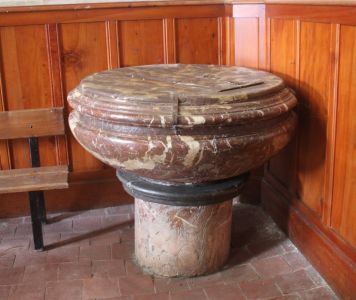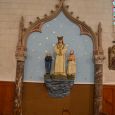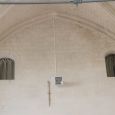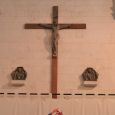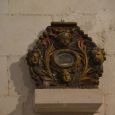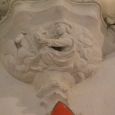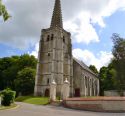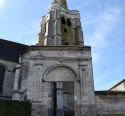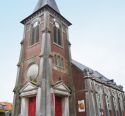Church | XV - XVIII | Gothic | Catholic Church

Map
Opening hours
01 May - 30 September
Mon
Tue
Wed
Thu 9.00 - 17.00
Fri 9.00 - 17.00
Sat 9.00 - 12.00
Sun
01 December - 31 December
Mon
Tue
Wed
Thu
Fri
Sat 9.00 - 12.00
Sun
During Advent 2024, the church will be open every Saturday from 9am to 12pm.
Local festival on the first weekend in September (Trail du diable).
Religious offices
Description
In the centre of the village, the first church that was built took the name of St.Martin in the 12th century and was destroyed in the 15th century. It was rebuilt twice during the 16th century and then in 1678.It is not totally visible to passers-by because only its south facade and the chevet are visible from the main square and the adjacent roads. The north facade opens on to the park of the chateau, while the west facade is non-existent, it is the side that joins the chateau.
The south facade, rhythmed by buttresses which maintain the thrust of the gothic vaults which cover the nave, is decorated by openings framed with archivolts, richly decorated with vegetation and animals drawn from the medieval bestiary. Over the door, the first opening, is surmounted by the shield of the counts of Lens, and the central bay is surmounted by an eagle with spread wings. The originality of the other openings is their circular shape, all having stained glass windows.
Photos
Remarkable elements
Red marble with white veins
Among the materials used in the furnishings, red marble with white veins plays an important role, as can be seen in the baptismal font, the stoup column and the side altar. These various pieces, probably dating from the end of the 16th century, come from the former cathedral of Arras.
The baptismal font consists of a large basin and a column with a black marble capital.
The font is divided into two parts: the column and the basin inlaid in a Corinthian sandstone capital on which appear the arms of Gilles de Lens and Marie de Habarcq (family of the lords of Habarcq).
Translated with www.DeepL.com/Translator (free version)
Interior windows
The church and castle were (re)built and maintained by the lords of Habarcq between the 13th century and the end of the 18th century, as shown by the coats of arms above the entrance door and in the choir. The installation of these two windows allowed the chatelains to attend the ceremonies without having to go into the church.
Translated with www.DeepL.com/Translator (free version)
Painting "The Beheading of Saint John the Baptist
This undated and unsigned work has an identical one in the church of Saint-Nicolas in Boulogne and probably in the church of Saint-Maurice des Champs in Lille, attributed to the artist Jean de Boulogne, known as "Le Valentin".
Inspired by Caravaggio, the artist's work is based on the expressions of the characters, which can sometimes disturb the viewer.
Here the religious subject of this painting is not a scene described in the New Testament, but a fact following an episode: the reaction of the characters after the beheading of John the Baptist.
On the same wall there are two other paintings: a crucifixion and a painting representing the denial of Saint Peter. The latter is probably attributed to Gerard Seghers (a Flemish painter from the first half of the 17th century).
Translated with www.DeepL.com/Translator (free version)
Christ on the Cross
In 1940, a storm uprooted several trees in the castle grounds, including a cedar of Lebanon used to make the cross.
As for the Christ, it is the work of Abbé Taillard, parish priest of Habarcq at the time, who recovered an oak beam from the old Calvary of Wanquetin.
Translated with www.DeepL.com/Translator (free version)
Reliquaries
Protected as Historic Monuments, these two 17th century reliquaries come from the former altar of the church. They are decorated with vegetation and cherubs' heads carved in painted lime wood.
Translated with www.DeepL.com/Translator (free version)





